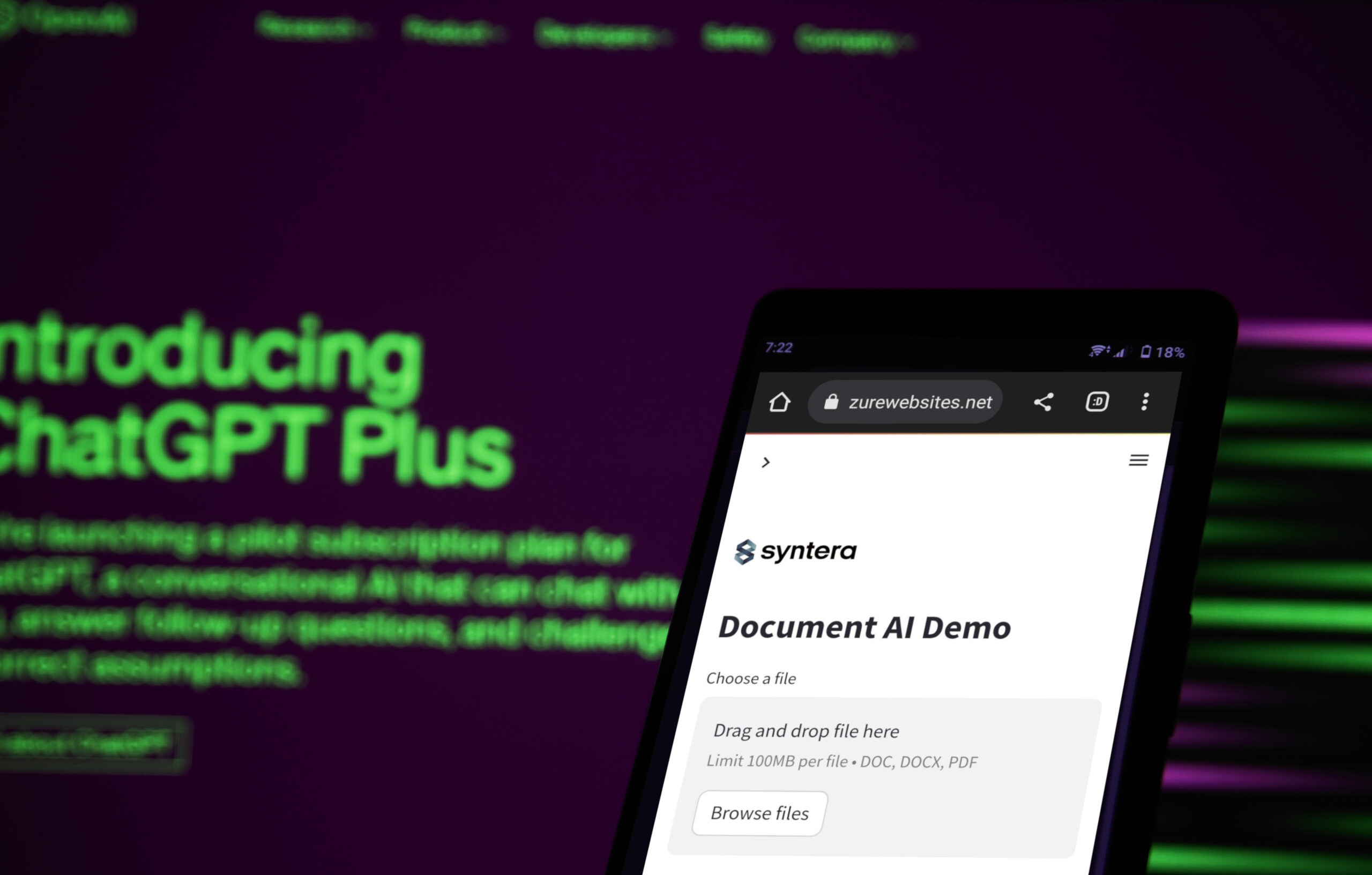What can Artificial Intelligence (AI) do for your business? An interesting question which, at the moment, seems to have an answer more anchored in hype and less in reality. We at syntera believe, that AI is here to stay and the gap between hype and reality is closing – At last, the current state of AI is the worst it will ever be.
In this blogpost we will explore how to build an AI app quickly and efficiently in three parts: Getting Started, Technology and Additional Success Factors. And you can check out a working prototype we built using the technologies described in this blog:
Getting Started
Define your Use Case
Before diving into the development process, it is crucial to clearly define your business objectives and what you want to achieve with AI. Start with the use case and define your requirements. This will help you focus on the most relevant features and functionalities for your application. Here are some high level ideas:
An application which helps our employees:
- to quickly extract relevant content from large files
- to find relevant articles from your knowledge base
- to summarize and classify incoming user inquiries
Success Criteria
After you have a clearly defined your desired state, move on to define the conditions under which your prototype is considered a success. This should be a combination multiple conditions. An example of such a condition would be “97% accuracy in classifying incoming user inquiries compared with the current human performance”. You can use these conditions to validate your prototype after you built it.
Prototype
After you know what to build and how to measure it, move to the prototype state. Build on top of what is already existing. Choose proven frameworks and pretrained models to minimize your initial effort. As much as we love optimizing and automatization, this stage is for focusing on getting things done rather than making it perfect. Focus on the use case. Here are some technologies we like to use to quickly build a working prototype.
The Technology
AI Models
There are a lot of pretrained models which you can use directly in your application. Whether they are from OpenAI, Microsoft, Facebook (Meta) or anything else – start with an existing model to verify your use case quickly. The most straight forward way is to leverage a hosted model via API calls. For this, we love Azure Cognitive Services and the OpenAI API.
Python
Quick to learn, easy to read, fast to write and amazing libraries ready to use. In our opinion a good match to quickly create the necessary code. With the Python frameworks below, a prototype can be created in record time. There are arguments for and against Python. In our opinion, the programming language is a very important decision but in the end we advocate to pick whatever language your developers are skilled in and what gets the job done.
LlamaIndex
LlamaIndex is a framework that allows users to connect custom data sources to large language models. It provides tools for data ingestion, data indexing, and a query interface for knowledge-augmented responses. LlamaIndex enables the building of powerful end-user applications such as document Q&A, data augmented chatbots, and structured analytics. It supports the integration of unstructured, structured, and semi-structured data sources.
LangChain
LangChain is a framework for developing applications powered by language models. LangChain provides modular abstractions for the components necessary to work with language models. It aims to enable applications that are data-aware and allow language models to interact with their environment through chains of modular components to complete complex tasks.
Streamlit
Streamlit is an app framework that allows users to easily build and deploy data-driven web applications. It allows to build an app in minutes and allows for interactive features without the need for writing backend code or handling HTTP requests. Streamlit is used by data scientists to build and share machine learning models and analyses, and it is compatible with various data science tools and libraries. It is praised for its simplicity and efficiency in creating web applications.
Hosting the app
We love Azure. With the Azure App Service you get a simple setup process and automated infrastructure management. With this you can quickly and continuously deploy your app for testing and gather valuable user feedback. This streamlined approach allows you to focus on developing and refining your prototype without the complexities of managing underlying infrastructure. There is even a free tier!
Additional Success Factors
Legal Basis
Make sure you are compliant when creating your prototype. Know what you are allowed to do and what is prohibited either by your company or by the law. Think about privacy, security and data residency. As AI is still a very new technology, it is best to get someone from your legal team on board.
TESTING & REFINING
Make sure you have a group of users which are able to provide feedback. Listen to these users, keep them in the loop and they will help you create an application which is truly valuable. Act on the feedback you get and deploy new versions regularly to keep the iteration process ongoing. Validate your prototype against the defined success criteria.
Still unsure?
You have open questions about the technology or want to discuss possible use cases? Get in touch with us via our contact form. We love to hear from you:

One response to “Building AI Apps – Quickly And Efficiently”
Efficiently building AI applications is crucial in today’s fast-paced tech world. Thanks to the author for sharing insights on this essential topic.